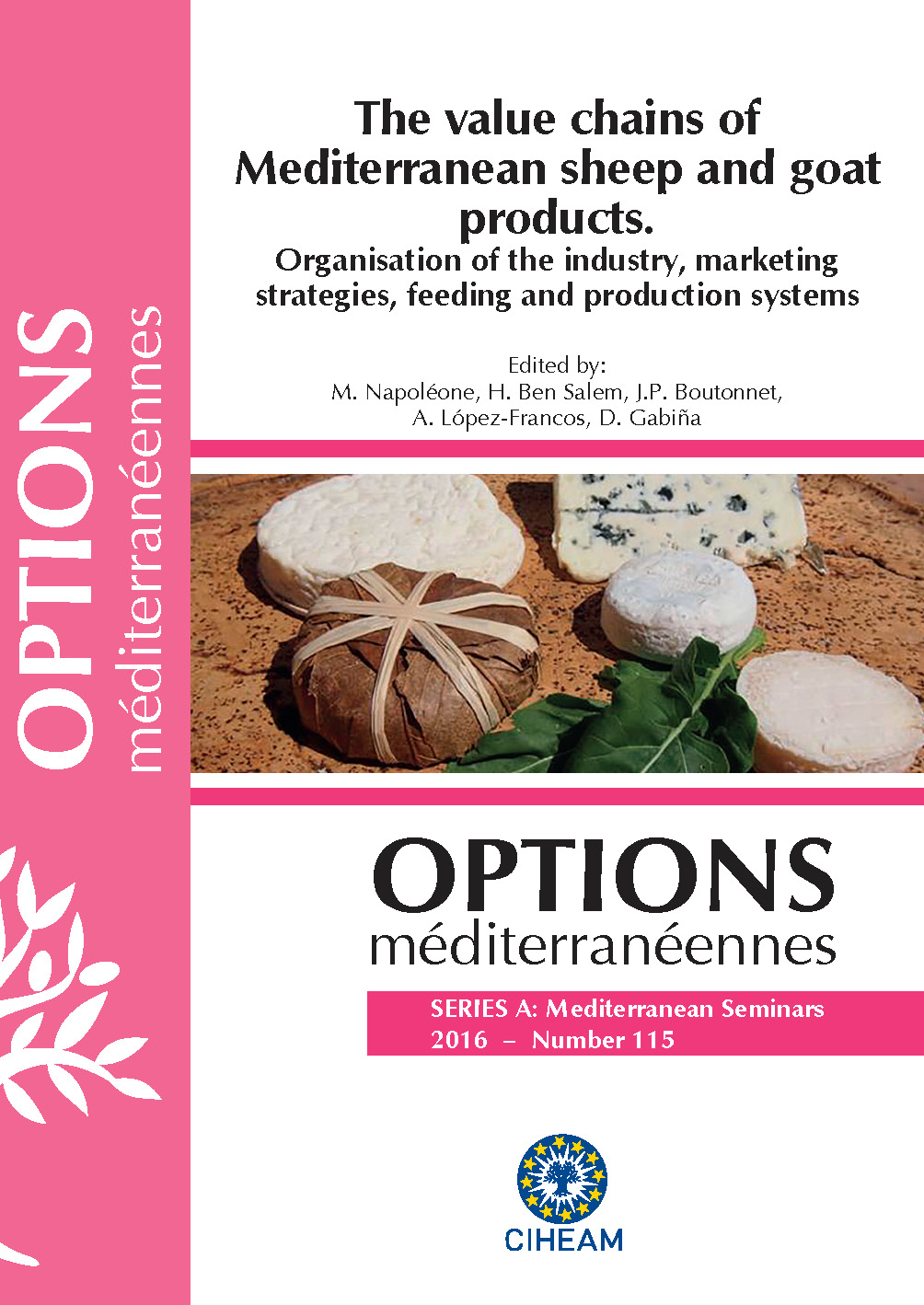| Article précédent | p. 119-123 | Article suivant |
Commercialisation de la viande ovine dans l’arrière-pays méditerranéen français
Les deux régions [Languedoc-Roussillon (LR) et Provence-Alpes-Côte d’Azur (PACA)] de l’arrière-pays méditerranéen français conservent une vieille tradition de consommation de viande ovine, avec des dimensions culturelles et cultuelles. La production y reste très inférieure à la consommation. Les circuits courts drainent un tiers de la production. Cependant ces deux régions présentent des caractéristiques différentes, tant pour l’élevage que pour la commercialisation. En LR les volumes produits sont faibles et dépendent partiellement de la production laitière. En PACA, la production est dynamique et structurante de l’activité agricole régionale ; la commercialisation est organisée depuis les années 1950 autour de l’approvisionnement des villes de la côte, à partir de la production locale complétée par des apports en vif et en viande venant de l’extérieur ; elle évolue vers une structure monopolistique entourée de circuits courts et d’achats d’animaux vivants par des opérateurs extérieurs. Les opérateurs locaux ne sont plus en mesure de capter l’offre locale. En LR, les opérateurs locaux et ceux des zones limitrophes exercent une activité de mise en relation des grands pôles de consommation des régions voisines (Espagne, région Midi-Pyrénées). La production locale n’est pas leur principal fournisseur, et la consommation locale n’est pas leur principal client. Leur diversité offre aux éleveurs de nombreuses alternatives pour commercialiser leurs produits. Notre communication montre les atouts et les contraintes de chacune de ces chaines de valeur.
Both regions [Languedoc-Roussillon (LR) and Provence-Alpes-Côte d’Azur (PACA)] of the French Mediterranean hinterland preserve an old tradition of consumption of lamb, with cultural and religious aspects. However, the production is much lower than the consumption. The short value chain drains one third of the production. However, these two regions present different characteristics, for breeding and marketing. In LR volumes depend partially on the dairy production. In PACA, the production is dynamic and structuring of the regional agricultural activity ; the marketing is organized since the 1950s around the supply of the coastal cities from the local production completed by meat coming from outside. It is evolving towards a monopolistic structure surrounded with short value chains and purchases of live animals by outer operators. The local operators are not capable any more of getting the local offer. In LR, the local operators and those of the bordering zones get in touch of the big poles of consumption of the nearby regions (Spain, Midi-Pyrénées). The local production is not their main supplier, and the local consumption is not their main part. The diversity of operators offers to the breeders numerous alternatives for marketing their products. Our communication shows the assets and the constraints of each of these value chains.
- [ Afficher ]
- [ Télécharger ]
- [ Exporter la citation ]
Vous pouvez télécharger la citation au format :
- [ Imprimer ]
-
Mots-clés
DURABILITE, VIANDE OVINECiter cet article
Nozières M.O., Boutonnet J.P., Petit T., Galan E. Commercialisation de la viande ovine dans l’arrière-pays méditerranéen français. In : Napoléone M. (ed.), Ben Salem H. (ed.), Boutonnet J.P. (ed.), López-Francos A. (ed.), Gabiña D. (ed.). The value chains of Mediterranean sheep and goat products. Organisation of the industry, marketing strategies, feeding and production systems. Zaragoza : CIHEAM, 2016. p. 119-123. (Options Méditerranéennes : Série A. Séminaires Méditerranéens; n. 115). Joint Seminar of the Subnetworks on Nutrition and on Production Systems of the FAO-CIHEAM Network for Research and Development in Sheep and Goats, 2015/06/16-18, Montpellier (France) . http://om.ciheam.org/om/pdf/a115/00007264.pdf



